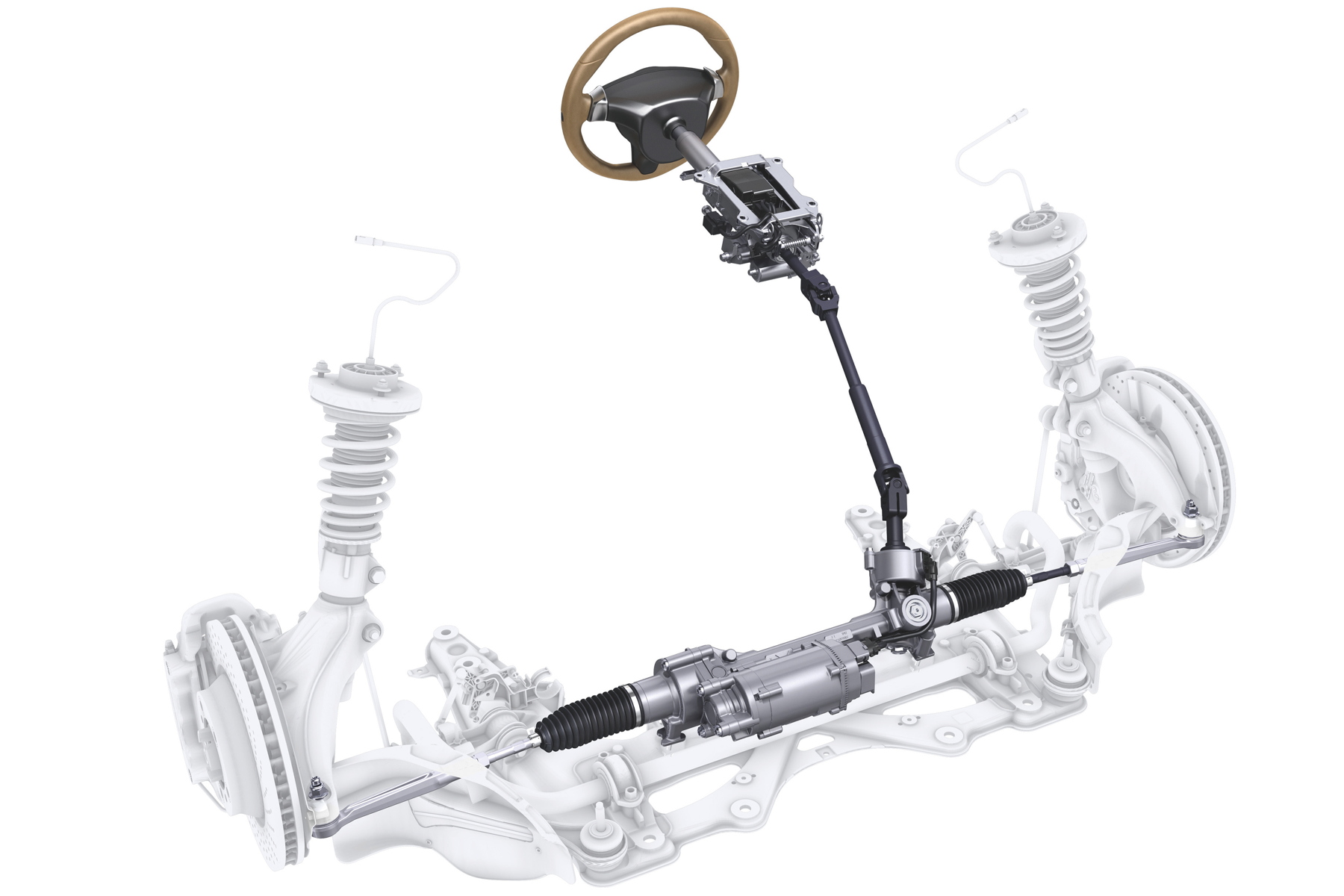Technology explained: Electrical power-assisted steering
First introduced on the 964 in 1989, the Porsche 911’s power steering has traditionally been hydraulically assisted. This system forces fluid to help turn the steering thanks to pistons within the rack itself. The fluid is pressurised by an engine-driven pump.
Moving to the 991, Porsche changed to a fully electric-assist system developed in conjunction with ZF. The new system uses an electric motor, mounted on top of the rack, to help force the steering around when the steering wheel is turned thanks to a second pinion gear.
Compared to the hydraulic system, the 991’s EPAS is much simpler, removing the need for an engine-driven pump and the rear-to-front plumbing needed to force the pressurised fluid to the steering rack.
Moreover, the electric motor doesn’t use any power from the engine, improving efficiency, while the whole system also saves weight over the 997’s power steering.
Rather than calculate the required assistance from the driver’s input though, Porsche’s EPAS uses the myriad information garnered through the various steering and wheel sensors to provide the necessary assistance.
The result is a rack which can constantly vary the level of assistance provided and, through tuning the system’s software, can increase steering weight when sports modes are activated.
The new EPAS also filters out a lot of high-level feedback frequencies, especially around the dead-ahead steering position. This makes the car smoother to drive, as it is easier to keep the car travelling in a straight line without the necessity to correct for every small bump and camber in the road surface.
Our online ‘technology explained’ features are the perfect way to brush up on Porsche’s increasingly complex engineering. Read them all here.


Comments (0)